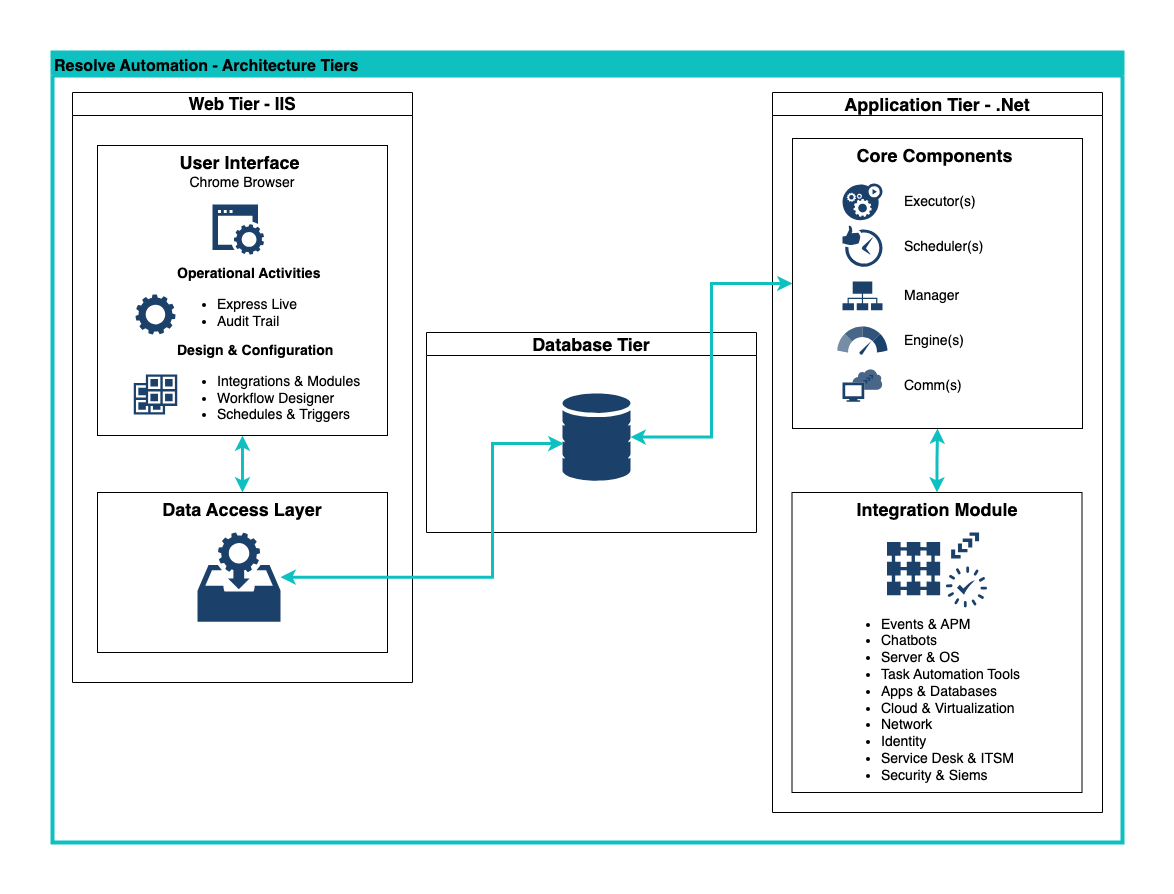Core Components
Core Components
The following diagram illustrates the core components configured within the Resolve Automation Architecture Tiers.

| Name | Component Overview |
|---|---|
| Engine | Processor of events and automations |
| Executor | Carries out tasks such as command execution on a remote host, or an HTTP request to an API |
| Comm | Facilitates communication between the various other components |
| Scheduler | Runs automations on a particular cadence as per users’ configuration |
| Data Access Layer (DAL) | Facilitates communication between the backend Microsoft SQL database and the frontend web application |
| User Interface | Provides the graphical interface for workflow management and system administration |
Engine
The engine is responsible for workflow management which includes:
Workflow Execution
- Determining which workflow to execute
- how long to wait
- routing a response back to the correct workflow
- Execution of non-executor based workflow activities
Event Management
- Receives incoming events
- Rule based execution
- Incident Creation
Incident Management
- Creates, updates, and closes incidents
Audit Trail
- Determines the appropriate outputs to capture within the Audit Trail
Executor
The executor is responsible for Non 3rd Party Application executions such as Ping, PowerShell and VMWare
Comm
Facilitates communication between all core components within the environment. Additionally, the Comm component is load balancing aware, which allows for:
- Monitoring and control
- Regular component status
- Component load
- Deduplication
- Licensing
Scheduler
The scheduler facilitates defined date and time execution of Engine workflows. At the time of execution the Scheduler sends an event to Comm. Comm then sends the request for immediate execution of defined workflow to the Engine.
Data Access Layer (DAL)
The Data Access Layer manages the interactions between the Resolve User interface and the Database.
User Interface
Supported and accessed via Google Chrome Browser, the User Interface provides the graphical interactions to manage workflow and system administration. The User Interface communicates directly with the Data Access Layer.
The User Interface can be deployed outside the firewall while all other components remain behind the firewall.